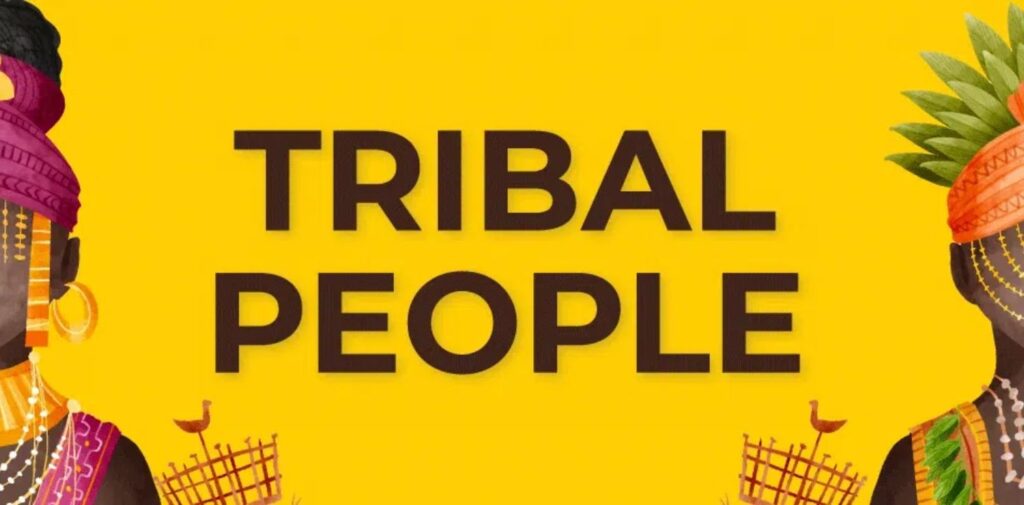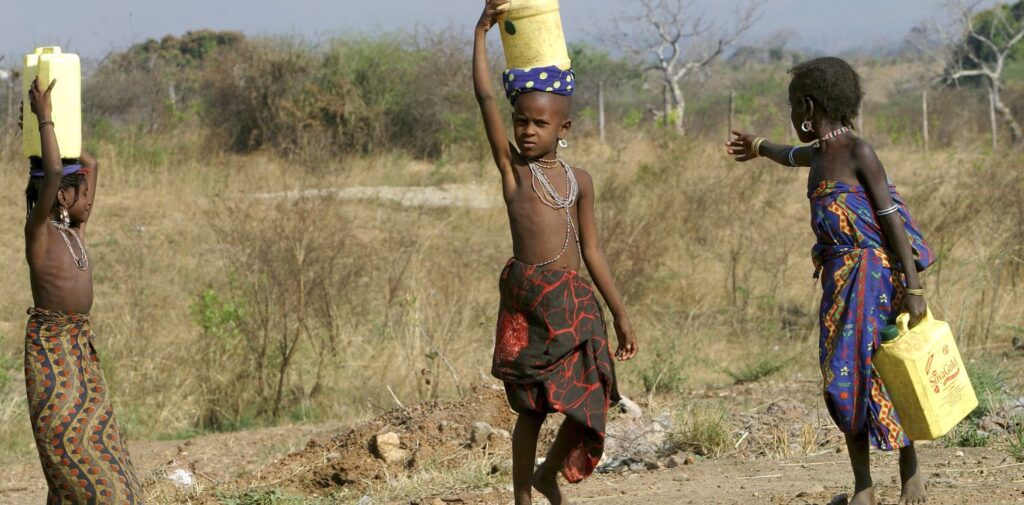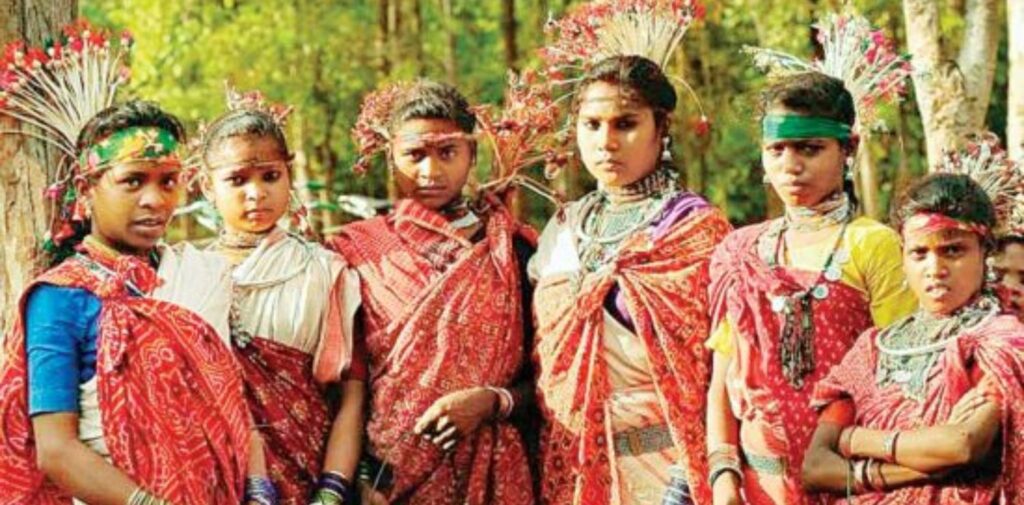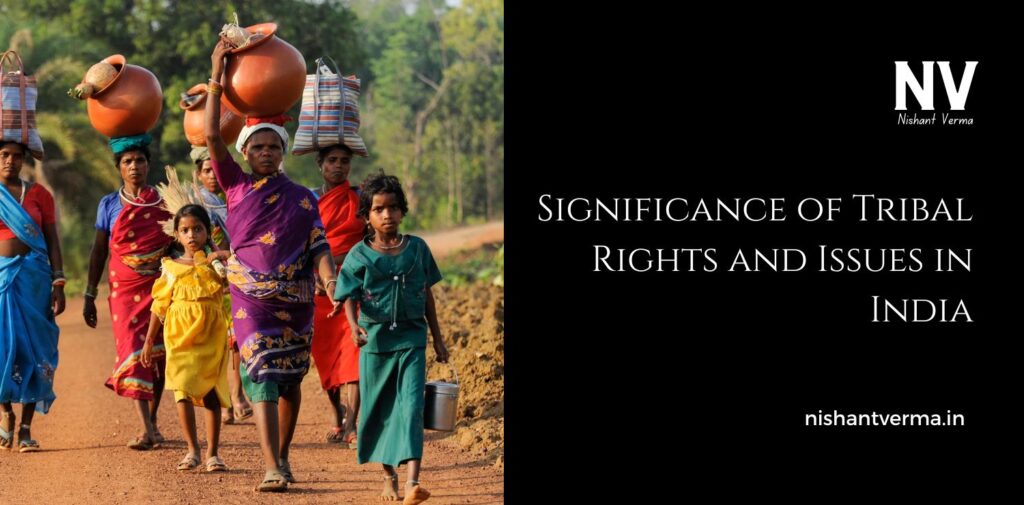India is a land of diversity, with different cultures, languages, religions, and communities living together. One of the most important groups in India is the tribal community. Tribes are people who have their own unique cultures, languages, and traditions. They live in different parts of the country, especially in forests and hills. The rights of these tribal people have been a significant part of India’s history, and understanding their struggles is key to understanding the country’s journey after independence.

Who Are the Tribal People?
Tribal people, also known as Adivasis, are the original inhabitants of India. They have lived in the forests and rural areas for thousands of years, long before modern cities and towns were built. Tribal communities are spread across various states, including Odisha, Madhya Pradesh, Jharkhand, Chhattisgarh, Maharashtra, Gujarat, and parts of Northeast India.
These communities have their languages, traditions, and ways of life. They depend on the forests for food, shelter, and their daily needs. Their connection with nature is very strong, and they have a deep understanding of the environment around them. Despite their rich culture and history, tribal people have faced many challenges, especially after India gained independence.
Tribal Rights in India
When India became independent in 1947, many changes took place in the country. However, tribal communities continued to face challenges. Their land and rights were often taken away by the government, and they struggled to get access to basic services like education, healthcare, and employment.
Over the years, many laws and policies were created to protect the rights of tribal people. These laws are important because they aim to secure the land, resources, and culture of tribal communities. One of the most important laws for tribal rights in India is the Indian Constitution, which recognizes tribal people as “Scheduled Tribes” and guarantees them certain rights. Some of these rights include:
- Land Rights: Tribal people have the right to live on their ancestral lands, and no one can take away their land without their consent.
- Protection from Displacement: The government has made laws to stop tribal people from being forced out of their land for development projects like dams, mining, or industries.
- Affirmative Action: Tribal people are given special privileges, like reservations in education and jobs, to ensure they are not left behind in the country’s development.
However, even with these protections, tribal people still face many struggles that affect their lives in different ways.
The Issues Faced by Tribal Communities
Loss of Land and Resources
One of the biggest problems faced by tribal communities is the loss of their land and natural resources. Over the years, many tribal people have been displaced from their traditional lands for projects like dams, roads, and factories. The government often claims that these lands are needed for development. However, tribal people are not always properly compensated, and many find themselves without land or a home.
For example, when large companies come to mine natural resources like coal or iron ore, they sometimes take land that belongs to tribal communities. This leads to a loss of livelihood because tribal people depend on forests for food, water, and fuel. When they lose their land, they not only lose their home but also their way of life.
Lack of Education and Healthcare
Tribal areas are often remote, which makes it difficult for children to go to school or for people to get proper medical care. Many tribal communities live in villages far from cities, so they don’t have easy access to schools, hospitals, or other government services. As a result, education levels are low, and many children from tribal communities drop out of school. This lack of education prevents them from getting good jobs and improves their chances of remaining poor.
Similarly, healthcare services are limited in tribal areas. Tribal people often do not have access to hospitals or doctors, and many suffer from preventable diseases. The lack of basic healthcare facilities makes life even harder for them.

Discrimination and Marginalization
Tribal people in India often face discrimination and are treated unfairly by others. They are sometimes seen as less important or as “outsiders” by people from other communities. This discrimination can happen in schools, workplaces, and even in villages, where tribal people may be excluded from social events or treated badly because of their background.
The lack of respect for their culture and traditions also adds to their marginalization. Many tribal communities have their languages, customs, and festivals. However these are often overlooked or seen as less important compared to the traditions of the dominant communities.
Exploitation by Outsiders
In many parts of India, tribal communities are exploited by outsiders who take advantage of their ignorance or lack of resources. For example, some tribal people are forced to work in dangerous conditions in mines or factories, where they are paid very little and often face harsh working environments.
Similarly, tribal farmers are sometimes tricked into selling their land at very low prices to non-tribal people or companies. This takes away their livelihood and makes them even more dependent on others.
The Role of the Government in Protecting Tribal Rights
Since independence, the Indian government has taken several steps to protect the rights of tribal people. Some important policies and programs include:
- The Forest Rights Act (2006): This law gives tribal people the right to access and manage forest resources. It also ensures that tribal communities have control over the forest land they have lived on for generations.
- Tribal Welfare Schemes: The government has created various programs to improve the living conditions of tribal people, including schemes for better education, healthcare, and economic development.
- Scheduled Tribes and Other Traditional Forest Dwellers (Recognition of Forest Rights) Act (2006): This Act helps tribal people get legal rights over the forest land they have traditionally used for survival. It also provides a way for them to fight against forced evictions.
However, despite these laws, implementation is often a problem. In many cases, the government’s policies do not reach the tribal people, and they continue to face poverty and oppression.
The Struggle for Tribal Rights
Over the years, tribal communities in India have fought hard for their rights. Many tribal leaders and activists have raised their voices to protect their land, culture, and resources. Movements like the Chipko Movement in Uttarakhand, where tribal people protected trees from being cut down, have shown the strength of tribal communities in protecting their environment.
Tribal people have also protested against displacement caused by industrial projects, which threaten their land and way of life. These protests highlight the need for better government policies and stronger protection for tribal communities.

The Importance of Tribal Rights
The rights of tribal people are important not just for their communities, but for the entire nation. Protecting tribal people’s rights ensures that their cultures and traditions survive. It also helps in maintaining the balance of nature, as tribal communities often live in harmony with the environment.
Tribal rights are also crucial for India’s development. If tribal people are left behind, it slows down the progress of the entire country. Empowering tribal communities means giving them the opportunity to contribute to the nation’s growth while preserving their cultural heritage.
Conclusion
Tribal rights and issues are an essential part of India’s history and future. While the government has taken steps to protect tribal people’s rights, there are still many challenges ahead. Tribal people deserve the right to live in dignity, with access to education, healthcare, and the protection of their lands.
Understanding the significance of tribal rights is essential for building a fairer and more just India. By protecting the rights of tribal communities, India can move towards a more inclusive society, where everyone, regardless of their background, can live with respect and equality.




